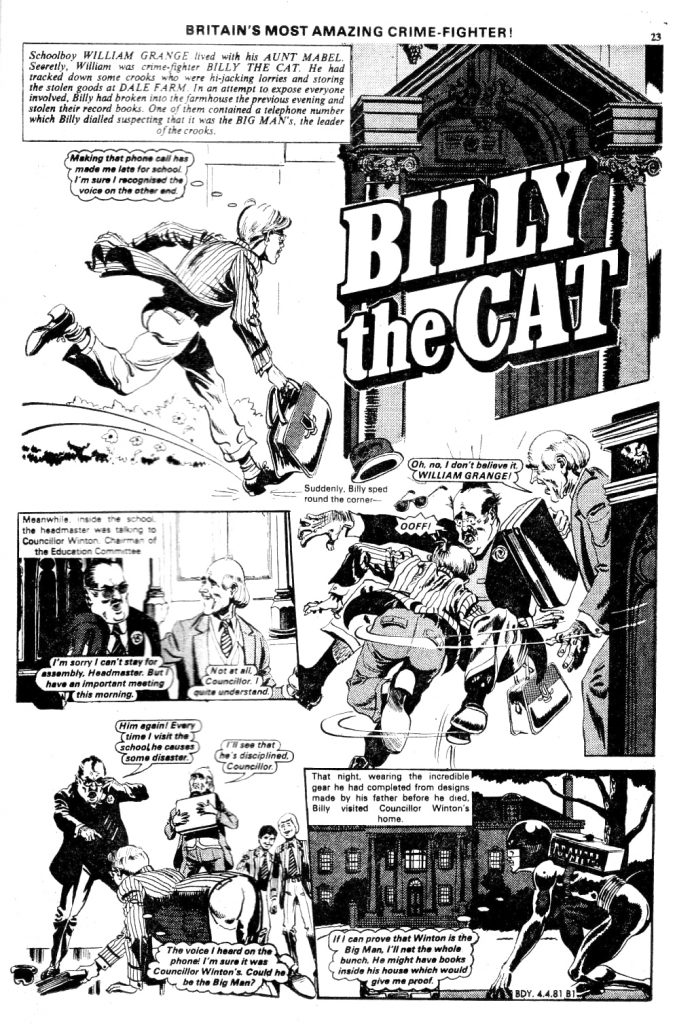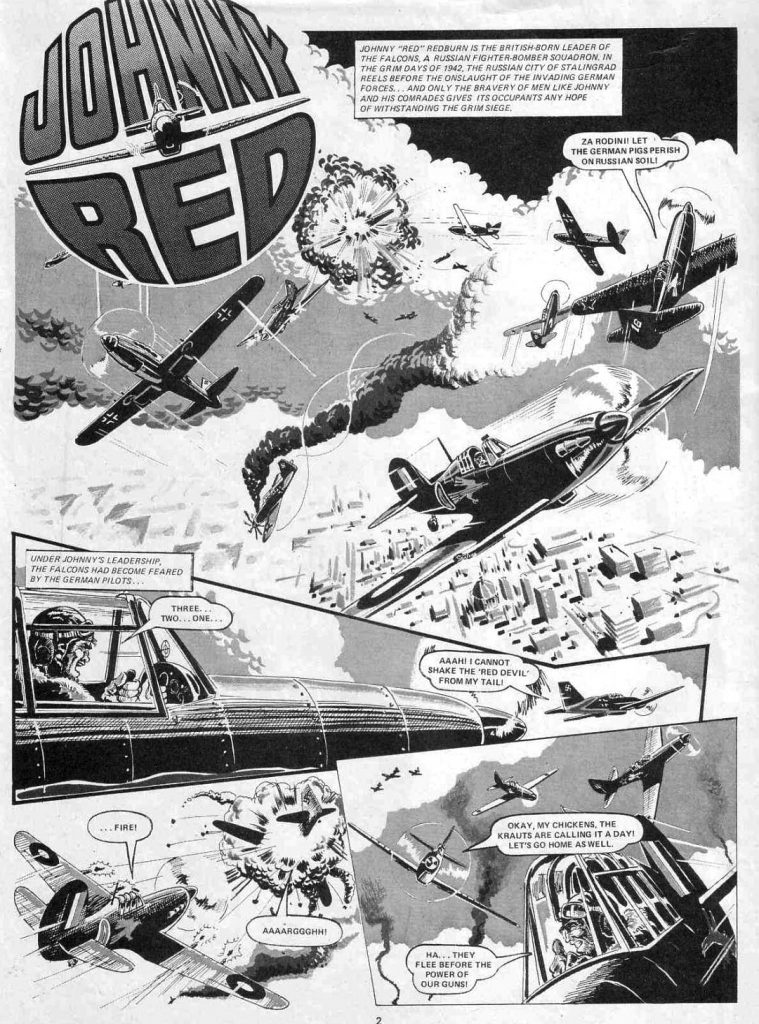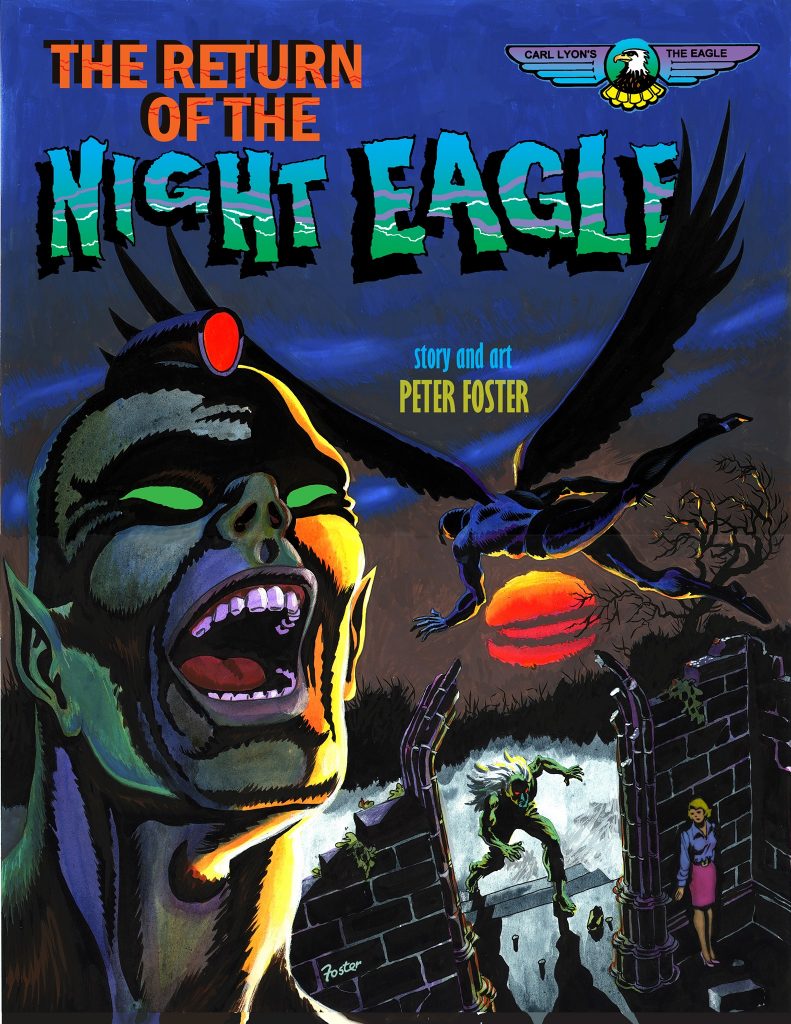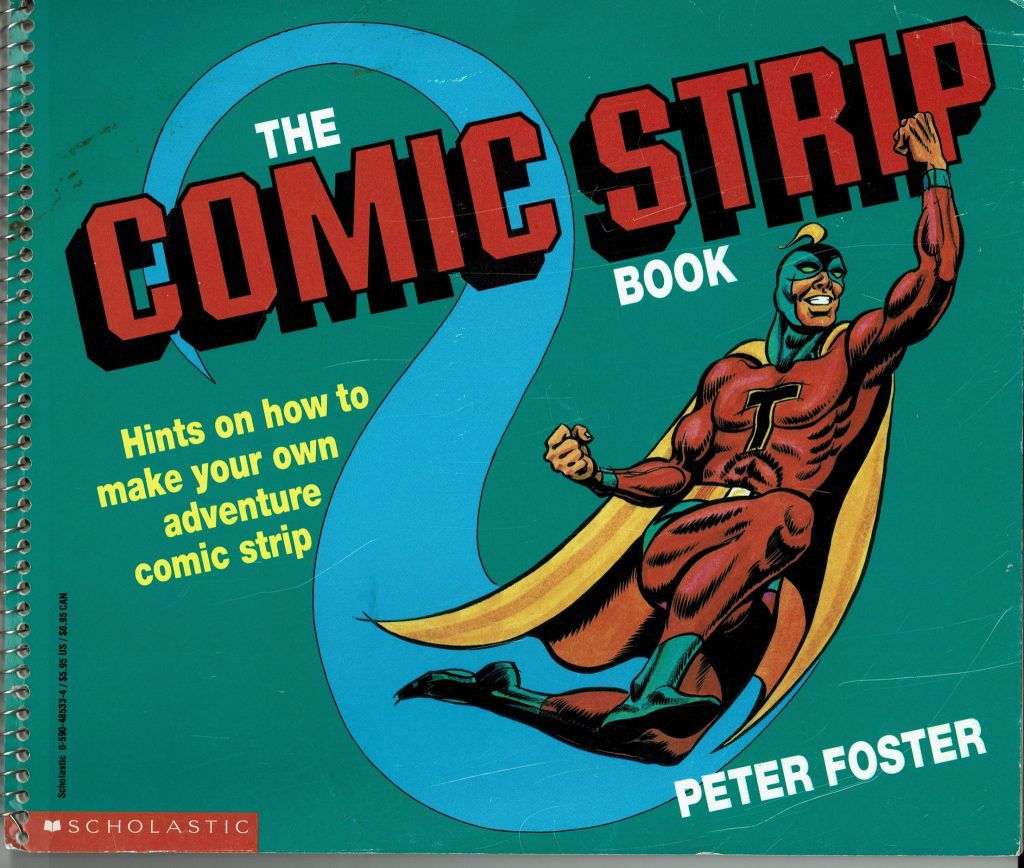
I was delighted to find a wonderful profile of Australian comic artist Peter Foster online recently, whose credits for British comics include work for both IPC and DC Thomson, including strips for Commando, Champ, The Crunch and many more.
Last year, we posted a shout out for information on a number of “Mystery” comic artists, prompted by an appeal from comics artist and archivist David Roach and following up on the “Comic Jam Symposium” organised by collector Peter Hansen (you can read the post here). Peter was one of the artists whose name was mentioned in response to the appeal.
Prompted by correspondence with London-based radio/podcast producer Daniel Ruiz Tizon, I’ve now discovered Australian blogger Nat Karmicheal, who runs the publishing imprint comicoz.com, not only picked up on the article but tracked Peter down, posting this terrific profile.
The artist, whose more recent comic work, including the Ballantyne series published in Australia, recalls his time in working in comics while based in the UK for some 20 months in the 1970s with much enthusiasm.

Born in Caulfield, Victoria on 18th May 1931, Peter was an art teacher at De La Salle College in Melbourne, and became a professional comic book artist after moving to England in 1978, where he stayed until 1980. Initially working on Hotspur, his many credits for DC Thomson include “Billy the Cat” and “Tuffy” for Buddy, “Crag” and “We Are United” for Champ, “The Mill Street Mob” for The Crunch and “Bleak Street Bunch” for Spike. He also drew some strips for IPC, including a one-off “Johnny Red” story for the 1979 Battle Holiday Special.
He also recalls drawing strips for girls comics, including “Nutmeg and Fritz” for Judy, a sequel to two previous stories drawn by Andy Tew, ” The Horse With a Mind of its Own” and “Nutmeg at the Olympic Games”.


On his return to Australia, he continued to work on strips for DC Thomson titles, producing over a dozen Commando and a similar amount of Football Picture Library stories. Miraculously, it’s noted here on the Pikitia Press blog, no artwork – estimated to have run to some 5000 pages – was lost in transit and only one script failed to turn up.
Peter also worked with the recently-passed James H. Kemsley Snr, father of “Ginger Meggs” cartoonist the late James L. Kemsley, on the “Ballantyne” strip for the Sydney Sunday Sun-Herald during the 1990s, since re-issued by Pikitia Press, who also published Peter’s update of the golden age Australian superhero, The Eagle, in Return of the Night Eagle.


He also wrote The Comic Strip Book, published by Scholastic in 1995, which is full of ideas and hints for creating comic strips, and has also drawn humour strips such as “Local Guvmint and Captain Lamplight“, written by James H. Kemsley Snr.
A new edition of Peter’s adaption of the Australian literary classic, For The Term of His Natural Life, first published in 1986, was released in 2012, again by Pikitia Press. Expanded to 64 pages, this edition is in full colour, and includes background material and a foreword by Marcus Clarke scholar Laurie Hergenhan.
Proving a creator of many talents, in 2005 he composed the music for a musical, Call of Guadalupe, a musical in collaboration with lyricist John Lee. Originally performed in 2005, Call of Guadalupe has since been toured across Australia and in the Philippines to audiences of over 25,000, and a number of illustrations inspired by it feature on his dedicated Facebook group.
It’s great to learn more about Peter’s work and highlight coverage of his career here by many others.
FURTHER READING
• Peter Foster – Facebook Appreciation
Peter Foster contributes to this group by way of the moderator, Matt Cole
• Pikitia Press: Peter Foster – Commando: The Pirate Killers
• Pikitia Press: Items Featuring Peter Foster, including book launch reports
• Some of Peter Foster’s Commando stories are highlighted here on the official web site
•
With thanks to Daniel Ruiz Tizon for sending me down this rabbit hole, Matt Cole at Pikitia Press for cross checking and additional information, David Roach for causing all the trouble in the first place, Nat Karmichael for his profile – and fantastic work for Australian comics, and Colin Noble for information on Commando
The founder of downthetubes, which he established in 1998. John works as a comics and magazine editor, writer, and on promotional work for the Lakes International Comic Art Festival. He is currently editor of Star Trek Explorer, published by Titan – his third tour of duty on the title originally titled Star Trek Magazine.
Working in British comics publishing since the 1980s, his credits include editor of titles such as Doctor Who Magazine, Babylon 5 Magazine, and more. He also edited the comics anthology STRIP Magazine and edited several audio comics for ROK Comics. He has also edited several comic collections, including volumes of “Charley’s War” and “Dan Dare”.
He’s the writer of “Pilgrim: Secrets and Lies” for B7 Comics; “Crucible”, a creator-owned project with 2000AD artist Smuzz; and “Death Duty” and “Skow Dogs” with Dave Hailwood.
Categories: Comic Creator Spotlight, Creating Comics, downthetubes Comics News, downthetubes News, Features

 Remembering Jon Haward: A Tribute by Tim Perkins
Remembering Jon Haward: A Tribute by Tim Perkins  Catching up with the Comics Laureate! An interview with Bobby Joseph
Catching up with the Comics Laureate! An interview with Bobby Joseph  Comic Creator Spotlight: An Interview with Commando and Doctor Who writer Rossa McPhillips MBE
Comic Creator Spotlight: An Interview with Commando and Doctor Who writer Rossa McPhillips MBE  Creating Comics: Artist PJ Holden takes us behind the scenes on Garth Ennis’ new war comic, The Lion and the Eagle
Creating Comics: Artist PJ Holden takes us behind the scenes on Garth Ennis’ new war comic, The Lion and the Eagle